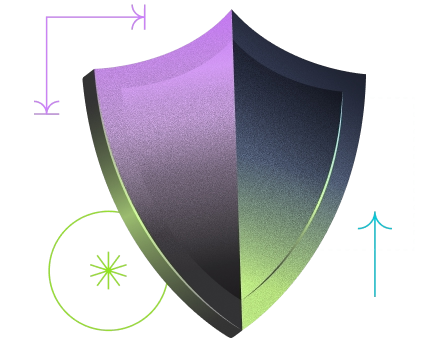In an era where information overflows and documents multiply exponentially, effective management of our digital assets has become essential. Digital archiving represents more than just storing files on a computer—it's a structured approach to preserving, organizing, and securing important documents for the long term. Whether you're looking to organize family photos or implement a corporate document retention strategy, understanding the principles of digital archiving can transform your relationship with information.
This comprehensive guide explores how digital archiving works, the benefits it offers, and practical steps to implement it in both personal and professional contexts.
What Is Digital Archiving and Why Does It Matter?
Digital archiving is the systematic process of collecting, preserving, and providing access to digital information over time. Unlike simple file storage, archiving focuses on long-term preservation and accessibility, ensuring that important documents remain usable despite technological changes.
NB:
Digital archiving differs from everyday backup or storage. While storage is about keeping files accessible in the short term, archiving focuses on long-term preservation, often for years or decades.
The concept addresses a growing concern: the potential "digital dark age" where valuable information becomes inaccessible due to obsolete file formats, degraded storage media, or lost metadata. With proper digital archiving, you create a sustainable system that protects your information heritage.
For businesses, digital archiving ensures:
- Regulatory compliance and legal protection
- Preservation of institutional knowledge
- Protection of intellectual property
- Efficient information retrieval
For individuals, personal digital archiving helps:
- Preserve family memories and important documents
- Organize financial and legal records
- Create digital legacies
- Reduce physical clutter while maintaining access to important information
Key Benefits of Digital Archiving
Implementing a structured digital archiving solution offers numerous advantages over traditional paper filing systems or ad-hoc digital storage:
1. Enhanced Accessibility and Searchability
With properly executed digital archiving, finding a specific document becomes a matter of seconds rather than hours of manual searching. Metadata and advanced search capabilities make information retrieval efficient and precise.
2. Space and Cost Savings
Physical documents consume valuable real estate. A comprehensive digital archiving approach can significantly reduce storage costs and free up physical space. For businesses, this can translate to substantial savings on office space and storage facilities.
3. Disaster Recovery and Business Continuity
Digital archiving creates redundancy that protects against physical disasters like fires or floods. With proper backup systems, your critical documents remain safe and accessible even during catastrophic events.
4. Improved Collaboration and Sharing
Digital archives can be securely shared with authorized users, enabling better collaboration without the need for physical document transfer. This is particularly valuable for remote teams or organizations with multiple locations.
5. Environmental Impact
Reducing paper usage through digital archiving contributes to environmental sustainability by lowering paper consumption, reducing waste, and minimizing the carbon footprint associated with document storage and transportation.
6. Audit-Proof Record Keeping
For regulated industries, digital archiving with proper controls creates tamper-evident records that satisfy compliance requirements. This audit-proof archiving protects organizations during inspections or legal proceedings.
Personal Digital Archiving: A Step-by-Step Guide
Personal digital archiving (PDA) has grown increasingly important as individuals accumulate vast amounts of digital content. From family photos to tax records, implementing a structured approach to personal digital archiving ensures your valuable information remains accessible.
Step 1: Inventory and Organize Your Digital Assets
Begin by taking stock of your digital materials:
- Important documents (financial, legal, medical)
- Photographs and videos
- Emails and correspondence
- Creative works
- Social media content
Step 2: Digitize Physical Documents
Convert important paper documents to digital formats:
- Use a scanner or smartphone scanning app for high-quality conversion
- Consider investing in a dedicated scanner for large projects
- Adopt consistent naming conventions for easy retrieval
- Include relevant metadata when saving files
Step 3: Choose the Right File Formats for Longevity
Not all file formats are created equal when it comes to long-term preservation:
Content Type | Recommended Format | Why |
|---|---|---|
Documents | PDF/A | Self-contained, preserves formatting, widely supported |
Images | TIFF, PNG | Lossless compression, maintains quality |
Audio | WAV, FLAC | Uncompressed or lossless options preserve quality |
Video | MP4 (H.264) | Good balance of quality and compatibility |
Step 4: Implement a Storage Strategy
For effective personal digital archiving, consider a multi-tiered approach:
- Primary storage: Organized file system on your computer
- Backup storage: External hard drives or NAS (Network Attached Storage)
- Cloud storage: Services like Google Drive, Dropbox, or OneDrive
- Cold storage: Offline archives for rarely accessed but important materials
Important:
Follow the 3-2-1 backup rule—keep at least three copies of your data, on two different types of media, with one copy stored off-site.
Step 5: Add Metadata and Documentation
Enhance your personal digital archiving with contextual information:
- Create descriptive file names that include dates and content descriptions
- Use folders and tags for logical organization
- Maintain a catalog or index of your most important documents
- Document your archiving system so others can understand it if needed
Step 6: Establish a Maintenance Schedule
Digital archiving is not a one-time project:
- Schedule regular reviews of your archive (quarterly or annually)
- Check for file integrity and corruption
- Update storage media before it becomes obsolete
- Migrate files to newer formats when necessary
Digital Archiving for Businesses: Beyond Basic Storage
Organizations implementing digital archiving solutions must balance regulatory compliance, security, and access needs. Legal firms and professional services organizations particularly benefit from comprehensive digital transformation strategies that integrate document archiving with signature workflows, case management, and client communication platforms. When selecting a system, consider scalability, security controls, compliance capabilities, integration with existing systems, and effective search functionality.
Many businesses benefit from specialized digital archiving platforms offering features beyond basic storage, including automatic metadata extraction, version control, retention policy enforcement, and advanced search capabilities.
Digital archives often contain agreements requiring signatures. Using electronic signature solutions with your digital archiving strategy creates complete digital workflows. For businesses ready to transform their entire contract lifecycle, our comprehensive guide to contract digitisation explores how to implement scalable processes from creation through secure archiving.
At Yousign, we provide seamless integration between e-signatures and document management, creating a robust foundation for your archiving strategy.
Try electronic signature for free for 14 days
The Role of Metadata in Digital Archiving
The Role of Metadata in Digital Archiving
Metadata—the information about your information—is the backbone of effective digital archiving. It provides context, enables search, and ensures documents can be understood and used over time.
Types of Essential Metadata
A comprehensive digital archiving strategy incorporates several types of metadata:
- Descriptive metadata: Identifies the content (title, author, subject, keywords)
- Administrative metadata: Manages the file (creation date, file type, rights information)
- Structural metadata: Shows relationships between documents or parts of documents
- Technical metadata: Details the technical aspects of digital files (resolution, bit depth, software used)
- Preservation metadata: Documents actions taken to preserve the content over time
NB:
Well-structured metadata can save hours of searching and provide crucial context that might otherwise be lost over time.
Organizations pursuing advanced digital archiving often adopt standardized metadata schemas like Dublin Core or PREMIS to ensure consistency and interoperability across systems.
Challenges in Digital Archiving and How to Address Them
Despite its benefits, digital archiving presents several challenges that must be proactively managed:
1. Format Obsolescence
File formats can become obsolete as technology evolves. Mitigate this risk by:
- Using standardized, open formats where possible
- Monitoring format trends and migrating when necessary
- Maintaining documentation about file formats used
2. Storage Media Degradation
All storage media have limited lifespans. Address this by:
- Refreshing media every 3-5 years
- Using multiple storage types (magnetic, solid-state, optical)
- Implementing regular integrity checks
3. Maintaining Context and Usability
Information without context loses value over time. Preserve context by:
- Creating robust metadata
- Documenting relationships between files
- Maintaining original order where meaningful
4. Privacy and Security Concerns
Not all information should be preserved indefinitely. Balance preservation with privacy by:
- Implementing clear retention policies
- Using secure deletion when appropriate
- Applying access controls to sensitive information
For businesses navigating digital transformation, our article on why digitisation is the way to go provides additional perspectives on managing these challenges.
Best Practices for Sustainable Digital Archiving
Whether you're focusing on personal digital archiving or implementing an enterprise solution, following key best practices ensures the longevity and usability of your digital records. Treat digital archiving as an ongoing process with written policies and regular reviews rather than a one-time project. Focus on quality at creation by using standardized templates, consistent naming conventions, and including essential metadata from the start. Implement redundancy through geographically distributed copies and diverse storage methods to protect against loss. Plan for technology evolution by budgeting for system updates and staying informed about emerging standards. Finally, prioritize your preservation efforts based on the value of different records, allocating resources to your most important documents.
For organizations implementing advanced document automation alongside digital archiving, our guide on forms and contracts automation solutions provides complementary insights.
Frequently Asked Questions About Digital Archiving
What is digital archiving, and why should I care?
Digital archiving is the systematic preservation of digital information for long-term access. Without proper archiving, important digital information—from family photos to business records—can become inaccessible or lost forever.
How can I start building my personal digital archive?
Begin by identifying your most important digital assets, organizing them logically, converting them to preservation-friendly formats, and implementing a 3-2-1 backup strategy with regular maintenance.
What tools are available for long-term preservation of documents?
For personal digital archiving, consider cloud storage services, dedicated backup software, and local NAS solutions. Businesses may need specialized archive platforms for more robust preservation features.
Why is metadata so important in archiving?
Metadata provides context and ensures discoverability of digital information over time. Without it, even perfectly preserved files may lose their meaning or become impossible to find.
What are some best practices to keep my digital archive safe?
Implement multiple backups using different technologies, regularly check file integrity, use standard file formats, and store copies in different physical locations to protect against local disasters.
Embracing the Future with Digital Archiving
The shift to digital information has transformed how we preserve knowledge. Effective digital archiving ensures valuable information remains accessible despite technological change. For individuals, personal digital archiving provides peace of mind, while businesses benefit from improved compliance and efficiency.
At Yousign, our electronic signature solutions integrate seamlessly with digital archiving systems, ensuring your signed documents remain secure and legally valid throughout their retention period. By implementing the strategies outlined in this guide, you can move from reactive storage to proactive preservation that protects your digital legacy.
Ready to Transform Your Document Management?
Try Yousign today!








